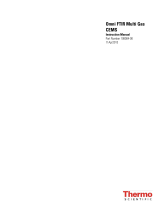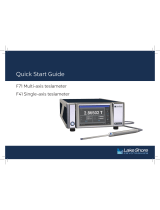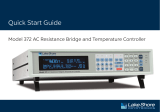
www.lakeshore.com
Wavenumber (cm-1)10,000 1,000 100 10
Wavelength (µm) 10001001010.1
ULTRAVIOLET VISIBLE NEAR-IR MID-IR FAR-IR EXTREME-IR
Sapphire Sapphire
Mylar™
Crystalline quartz Crystalline quartz
Polypropylene
Polyethylene
Diamond
ZnSe
UV-grade fused silica
Standard fused silica
CaF2
KBr
Cryostat Windows
Lake Shore oers a full range of windows for transmitting
light from x-rays to the THz range. Standard optical
cryostats have fused silica windows installed, but most
can easily be upgraded to a dierent window material for
other applications. The following pages show window
materials typically used on Lake Shore cryostats and
outline essential details, including whether the material
is suitable for use as a cold window. Specialty materials,
such as beryllium or vanadium, are available on request.
Our sales engineers can help determine the best window
material for the required transmission range.

Cryostat Windows
Lake Shore Cryotronics, Inc. | 614.891.2243 | sales@lakeshore.com | www.lakeshore.comp. 2 www.lakeshore.com
Sapphire
Sapphire has a very broad transmission range, extending
from ultraviolet to near-infrared. It is opaque in mid-
infrared but opens up again in far-infrared. Sapphire
is very strong, allowing thinner material to be used if
needed, and may be used as a cold window. Sapphire
is a crystalline material, so care must be taken if the
application is sensitive to birefringence.
Refractive index: 1.76
Transparency range: 0.15 μm to 5.5 µm and >200 µm
Scratch-resistant
Cold window
Wavelength (µm)
0.1
100
80
60
40
20
0
0.2 0.3 0.4 0.5 0.6 0.7 0.8 0.9 1.0 2.0 3.0 4.0 5.0 10 20 30 40 50
100
Percent transmittance
Wavelength (µm)
0.15
100
80
60
40
20
0
0.20 0.25 0.30 2.001.00 3.00 4.00
5.00
Percent transmittance
Standard fused silica
Standard fused silica is an inexpensive choice for
general-purpose windows and is the material used on all
standard 1.63 in clear view Environment by Janis window
ports. It is easy to clean, dicult to scratch, and has a
broad transmission range. It is strong enough for both
room temperature and cold windows. Some fluorescence
is seen in the ultraviolet, so care must be taken if the
application requires transmission at shorter wavelengths.
Refractive index: 1.46
Transparency range: 0.3 μm to 2.5 µm
Scratch-resistant
Cold window

Lake Shore Cryotronics, Inc. | 614.891.2243 | sales@lakeshore.com | www.lakeshore.com p. 3
UV-grade fused silica
UV-grade fused silica is a good choice for ultraviolet
transmission and may be used for both room temperature
and cold windows. Like the standard material, UV-grade
fused silica is easy to clean and dicult to scratch. It is
commonly the standard on smaller Environment by Janis
cryostats and is an option for cryostats with standard
1.63 in clear view diameter ports.
Refractive index: 1.46
Transparency range: 0.17 μm to 2.0 µm
Scratch-resistant
Cold window
Zinc selenide (ZnSe)
ZnSe is a yellow material with transmission into the mid-
infrared. This material is quite soft, so care must be taken
when handling these windows to avoid scratching. With
special strain relief mounting, ZnSe may be sealed cold.
A BBAR coating for higher transmission over a specific
wavelength range is available upon request.
Refractive index: 2.74
Transparency range: 0.38 μm to 18.4 µm
Susceptible to scratching
Cold window
Wavelength (µm)
0.15
100
80
60
40
20
0
0.20 0.25 0.30 0.35 0.40 2.001.00 3.00 4.00
Percent transmittance
Wavelength (µm)
0.1
100
80
60
40
20
0
0.2 0.3 0.4 0.5 0.6 0.7 0.8 0.9 1.0 2.0 3.0 4.0 5.0 10 20 30 40 50
100
Percent transmittance

Cryostat Windows
Lake Shore Cryotronics, Inc. | 614.891.2243 | sales@lakeshore.com | www.lakeshore.comp. 4
Calcium fluoride (CaF2)
CaF2 has excellent transmission from the soft UV to the
near-IR range and transmits further into IR than fused
silica or sapphire. It is not as easily scratched as ZnSe
but is dicult to seal cold, so it is only used as a room-
temperature window.
Refractive index: 1.43
Transparency range: 0.15 μm to 8.0 µm
Scratch-resistant
Cold window
Wavelength (µm)
0.1
100
80
60
40
20
0
0.2 0.3 0.4 0.5 0.6 0.7 0.8 0.9 1.0 2.0 3.0 4.0 5.0 10 20 30 40 50 100
Percent transmittance
Zinc sulfide (ZnS Cleartran)
ZnS is also an option for mid-infrared transmission. It is
slightly harder than ZnSe, and slightly less susceptible to
scratching. It may be sealed cold.
Refractive index: 2.45
Transparency range: 0.37 μm to 14 µm
Susceptible to scratching
Cold window
Wavelength (µm)
0.1
100
80
60
40
20
0
0.2 0.3 0.4 0.5 0.6 0.7 0.8 0.9 1.0 2.0 3.0 4.0 5.0 10 20 30 40 50
100
Percent transmittance
Cleartran® is a registered trademark
of CVD Ceramics, Inc.

Lake Shore Cryotronics, Inc. | 614.891.2243 | sales@lakeshore.com | www.lakeshore.com p. 5
Diamond
Diamond has excellent broad-range transmission from
ultraviolet to far-infrared. Lake Shore uses synthetic
(CVD-grown) diamond, typically in a small diameter,
for cost reduction. Diamond is very strong, and a thin
window may be used for both room temperature and cold
windows. Diamond is a crystalline material, so care must
be taken if the application is sensitive to birefringence.
Refractive index: 2.4
Transparency range: 0.22 μm to >100 µm
Scratch-resistant
Cold window
Potassium bromide (KBr)
KBr has good transmission into infrared and is useful on
cryostats, including the ST-FTIR or VPF-FTIR. KBr is soft
and needs to be thicker than other materials to withstand
the force of vacuum, and it cannot be used as a cold
window. KBr is hygroscopic, so care needs to be taken to
keep it dry.
Refractive index: 1.54
Transparency range: 250 nm to 50 µm
Susceptible to scratching
Cold window
Wavelength (µm)
0.1
100
80
60
40
20
0
0.2 0.3 0.4 0.5 0.6 0.7 0.8 0.9 1.0 2.0 3.0 4.0 5.0 10 20 30 40 50
100
Percent transmittance
Wavelength (µm)
0.1
100
80
60
40
20
0
0.2 0.3 0.4 0.5 0.6 0.7 0.8 0.9 1.0 2.0 3.0 4.0 5.0 10 20 30 40 50
100
Percent transmittance

Cryostat Windows
Lake Shore Cryotronics, Inc. | 614.891.2243 | sales@lakeshore.com | www.lakeshore.comp. 6
Polypropylene
Polypropylene (PPN) is transparent in the far-infrared.
While it does not have as good a transmission as PE,
it may be used as a cold window. PPN is made in-
house from commercially available materials. Surface
imperfections and scratches may be present but are
usually smaller than the wavelength of IR light used with
these windows. Lake Shore commonly pairs PPN with PE
on cryostats such as the STVP-FTIR, with PPN the cold
window of the pair and PE the room-temperature window.
Refractive index: 1.49
Transparency range: 50 μm to >100 µm
Susceptible to scratching
Cold window
Wavelength (µm)
0
100
80
60
40
20
0
20 40 60 80
100
Percent transmittance
Polyethylene
Polyethylene (PE) is transparent in far-infrared. Many
customers working in the infrared range choose to have
two ZnSe windows and two PE windows on their cryostat
to cover transmission from visible to far-infrared. PE is
made in-house from commercially available materials.
Surface imperfections and scratches may be present but
are usually smaller than the wavelength of IR light used
with these windows. PE cannot be sealed cold, so it can
only be used as a room-temperature window.
Refractive index: 1.49
Transparency range: 20 μm to >100 µm
Susceptible to scratching
Cold window
Wavelength (µm)
0
100
80
60
40
20
0
50 100 150 200 300 500400 600 700 800
900
Percent transmittance

Lake Shore Cryotronics, Inc. | 614.891.2243 | sales@lakeshore.com | www.lakeshore.com p. 7
Mylar
Mylar is an opaque plastic film that can be used for both
cold and room-temperature windows. Mylar is commonly
used on cryostats for Mössbauer spectroscopy. Care
must be taken when this material is used as a cold
window, as it is permeable to helium at temperatures
above ~100 K.
Refractive index: 1.64
Transparency range: Gamma rays, and >200 µm
Cold window
Crystalline quartz
Crystalline quartz has a broad transmission range,
extending from ultraviolet to near-infrared. It is opaque in
the mid-infrared but opens up again in the far-infrared. It
has better transmission in the far-infrared than sapphire,
but since it is a crystalline material, care must be taken
if the application is sensitive to birefringence. Crystalline
quartz may be used on both cold and room-temperature
windows.
Refractive index: 1.55
Transparency range: 0.18 μm to 3.5 µm and >40 µm
Scratch-resistant
Cold window
Kapton
Kapton is an opaque plastic film that can be used for
both cold and room-temperature windows. Kapton is
commonly used on cryostats for x-ray measurements.
Refractive index: 1.82
Transparency range: x-ray
Cold window
Wavelength (µm)
0.1
100
80
60
40
20
0
0.2 0.3 0.4 0.5 0.6 0.7 0.8 0.9 1.0 2.0 3.0 4.0 5.0 10 20 30 40 50
100
Percent transmittance

Woburn location
225 Wildwood Avenue
Woburn, MA 01801-2025
Tel:+1 781 491 0888
Westerville headquarters
575 McCorkle Blvd
Westerville, OH 43082-8699
Tel:+1 781 491 0888
Copyright © Lake Shore Cryotronics, Inc. All rights
reserved. Specifications are subject to change.
May 22, 2023 1:25 PM
-
 1
1
-
 2
2
-
 3
3
-
 4
4
-
 5
5
-
 6
6
-
 7
7
-
 8
8
Lakeshore Cryogen-free cryostats User guide
- Type
- User guide
- This manual is also suitable for
Ask a question and I''ll find the answer in the document
Finding information in a document is now easier with AI
Related papers
-
Lakeshore Cryogenic Cable User guide
-
 Lakeshore M81-SSM Synchronous Source Measure System User guide
Lakeshore M81-SSM Synchronous Source Measure System User guide
-
 Lakeshore 7304 Owner's manual
Lakeshore 7304 Owner's manual
-
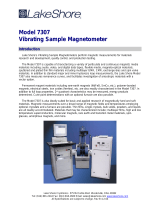 Lakeshore 7307 Owner's manual
Lakeshore 7307 Owner's manual
-
 Lakeshore 7310 Owner's manual
Lakeshore 7310 Owner's manual
-
 Lakeshore 240 Series Input Modules User manual
Lakeshore 240 Series Input Modules User manual
-
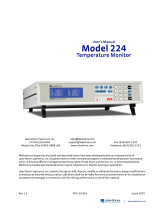 Lakeshore 224 Temperature Monitor User manual
Lakeshore 224 Temperature Monitor User manual
-
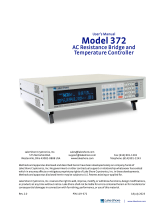 Lakeshore 372 AC Resistance Bridge User manual
Lakeshore 372 AC Resistance Bridge User manual
-
 Lakeshore 336 Cryogenic Temperature Controller User manual
Lakeshore 336 Cryogenic Temperature Controller User manual
-
 Lakeshore 350 Cryogenic Temperature Controller User manual
Lakeshore 350 Cryogenic Temperature Controller User manual

















